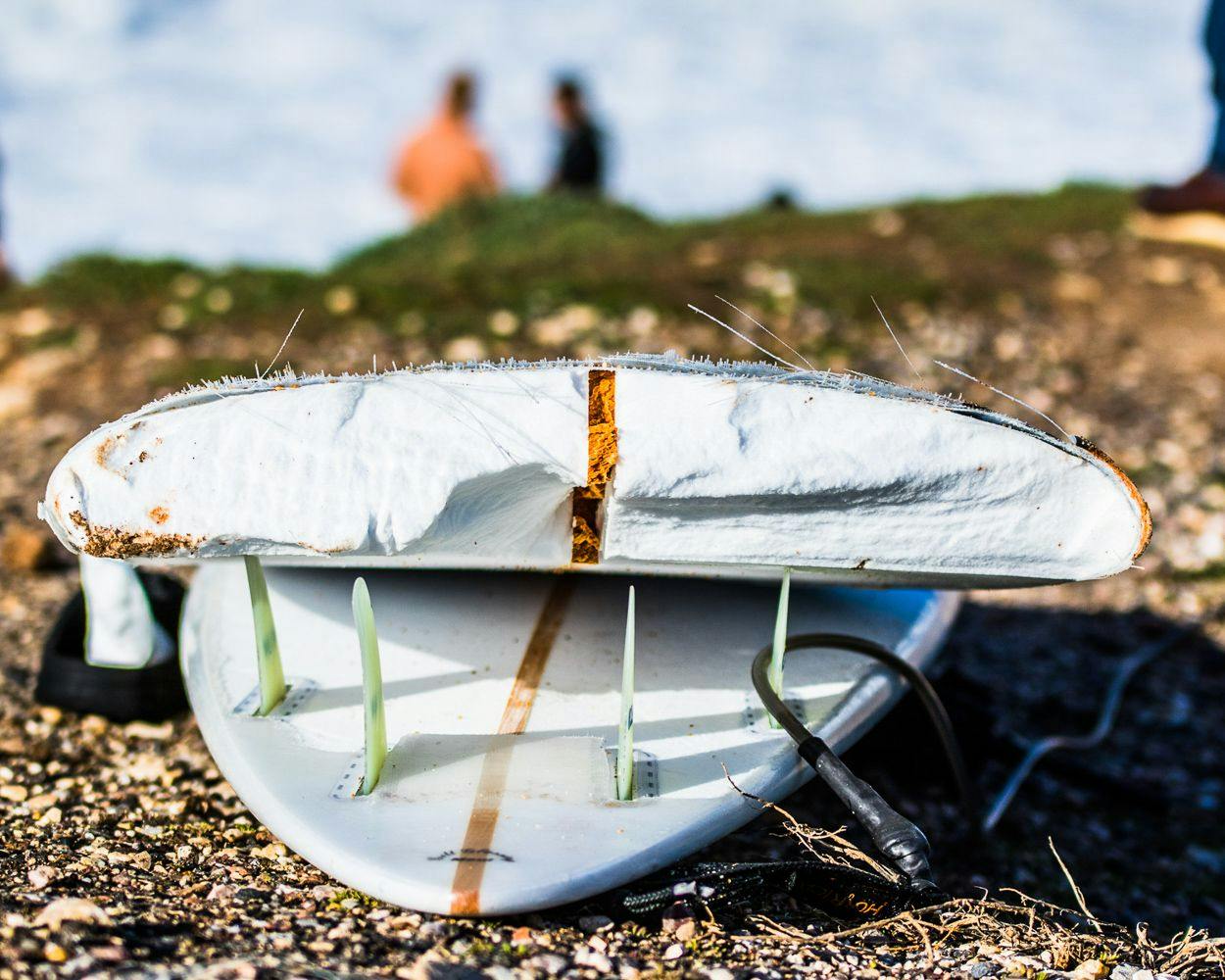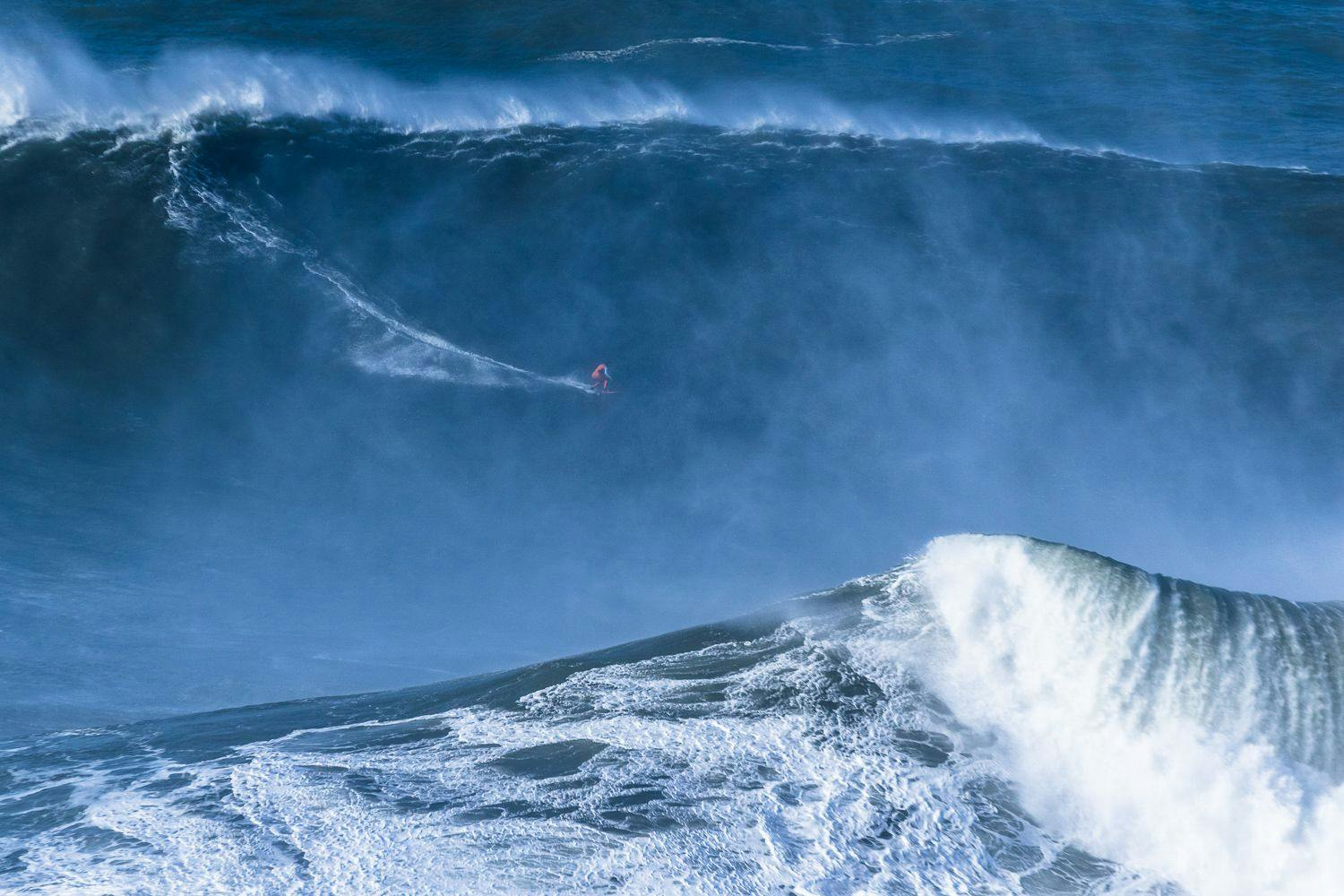Nature, Photography, Surf PhotographyNazaré: The Beauty of the Beast

Welcome to Nazaré: home of the largest waves on the planet.
Nazaré has been surf media’s super-sized darling as of late; Even more than the recent Big Wave Tour event, heroically won by the Brazilian upstart Lucas Chumbo, Nazaré has broken the internet with what many believe to be the largest wave ever surfed. Hugo Vau, with the assistance of his tow partner Alex Botelho and water safety Marcelo Luna, rode a mountain of water estimated at over 35 meters, a wave with power nearly incomprehensible to you and I. Although the jury is still out on official wave size, the big wave community has collectively celebrated the great achievement.
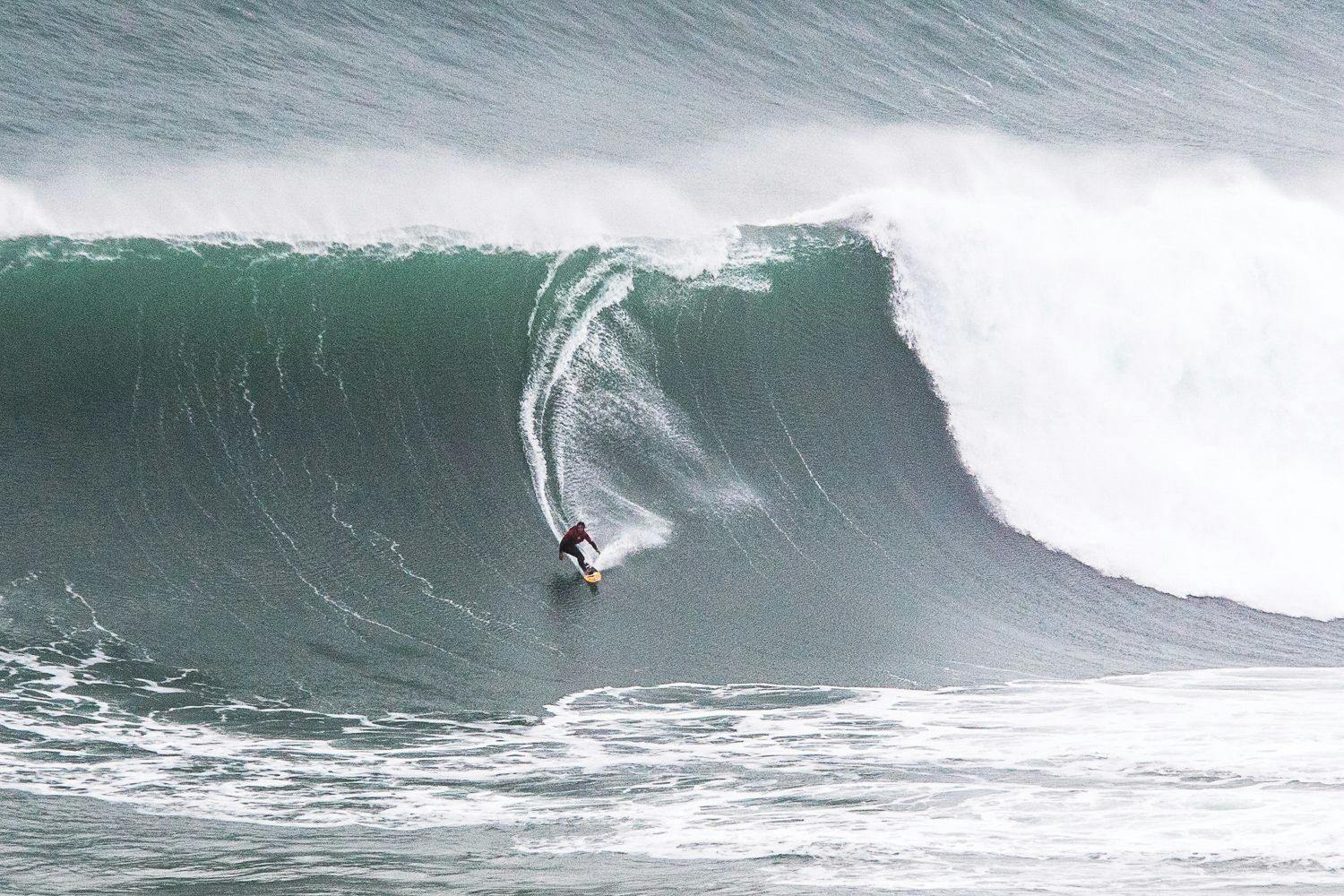
The theater of this great feat was not the stage one would expect. Far from the famous big waves of Hawaii and the Pacific lies Nazarè, a small fishing village overlooking the Atlantic Ocean on Portugal’s Silver Coast, 75 miles north of Lisbon. Nazaré is a quaint town, comprised of three distinct districts; Praia can be found nestled against the sea, the inland region of Paderneria, and Sitio, the promontory overlooking the vast big-wave arena. Past the narrow alleys and windy stone streets of Sitio, lies the great Forte de São Miguel Arcanjo, a 16th-century castle that watches over the waves like an ancient warden. Today, the forte is home to a museum that collects in its walls the heirlooms of surfers that have braved the waves it has watched over for hundreds of years.
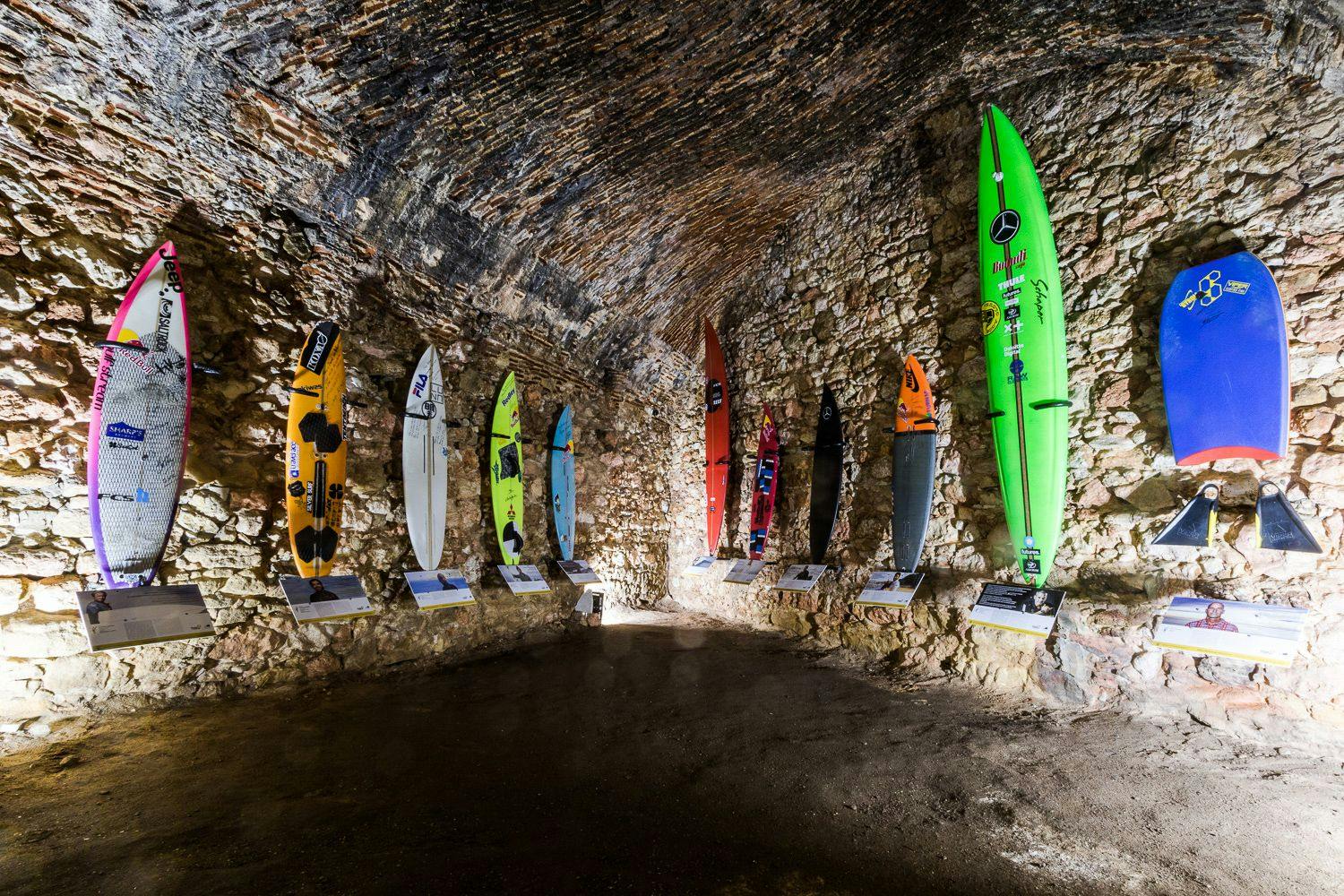
Praia di Norte is located at the end of a 140-kilometer long submarine canyon, with depths reaching over 3300 meters. This bathymetric anomaly grabs open ocean swell and tunnels them towards the shore, an effect that increases the power and speed of waves approaching Nazaré exponentially. The most powerful of these waves can be found from November to May, as powerful winter storms churn swell after swell aimed perfectly at the Portuguese coastline.
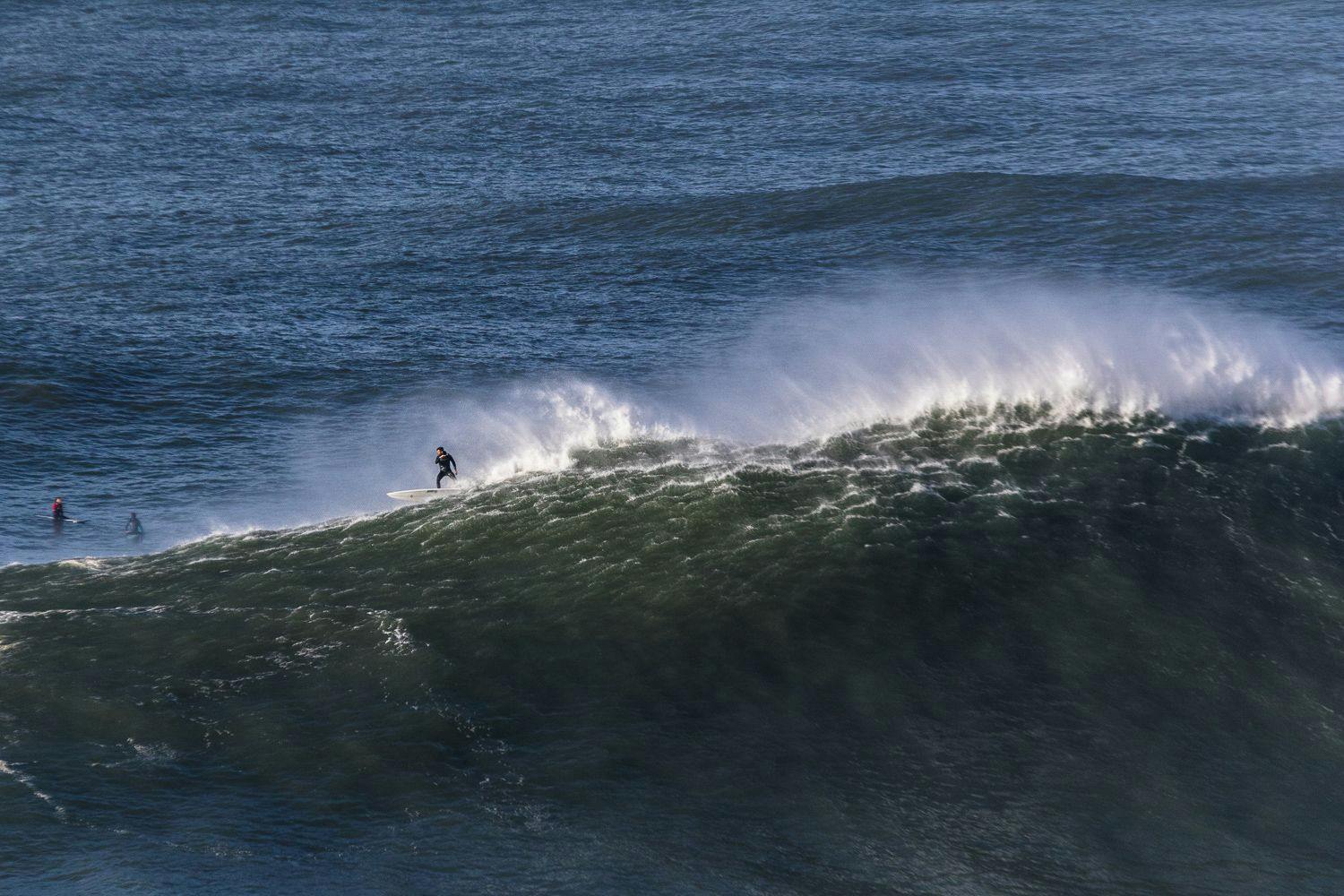
The area of Nazaré stands in stark contrast to the upscale resorts and tropical destinations that have come to characterize the surf travel experience. Tourism is growing fast, but the area still stands bound to its traditional fishing heritage. The town of Nazaré is often referred to as the “City of Women”, as historically the men of the town spent long periods of time away from home fishing. Because of their absence, the burden of keeping the town alive fell on the women, who started their own businesses and became the village’s beating heart.
Just as the town itself does not fit typical conventions, the Nazaré surfer is a unique breed. Rather than a solo endeavor, a surfer hoping to tackle the mammoth waves relies on the help of a jet-ski driver and safety team, quick to assist and deal with the heavy currents and shifting nature of the line-up, nearly impossible to handle on your own. From the moment a surfer goes down, the driver is poised to come to the rescue from a chaotic sea, as the third member of the team stands on the promontory, radioing specific locations of the fallen surfer. Even their personal equipment bears few semblances to the layperson, as long slender boards designed for the extreme conditions and inflatable safety gear has the surfer appearing more like a soldier preparing for battle than an average surfer going to enjoy a quick session in the sea.
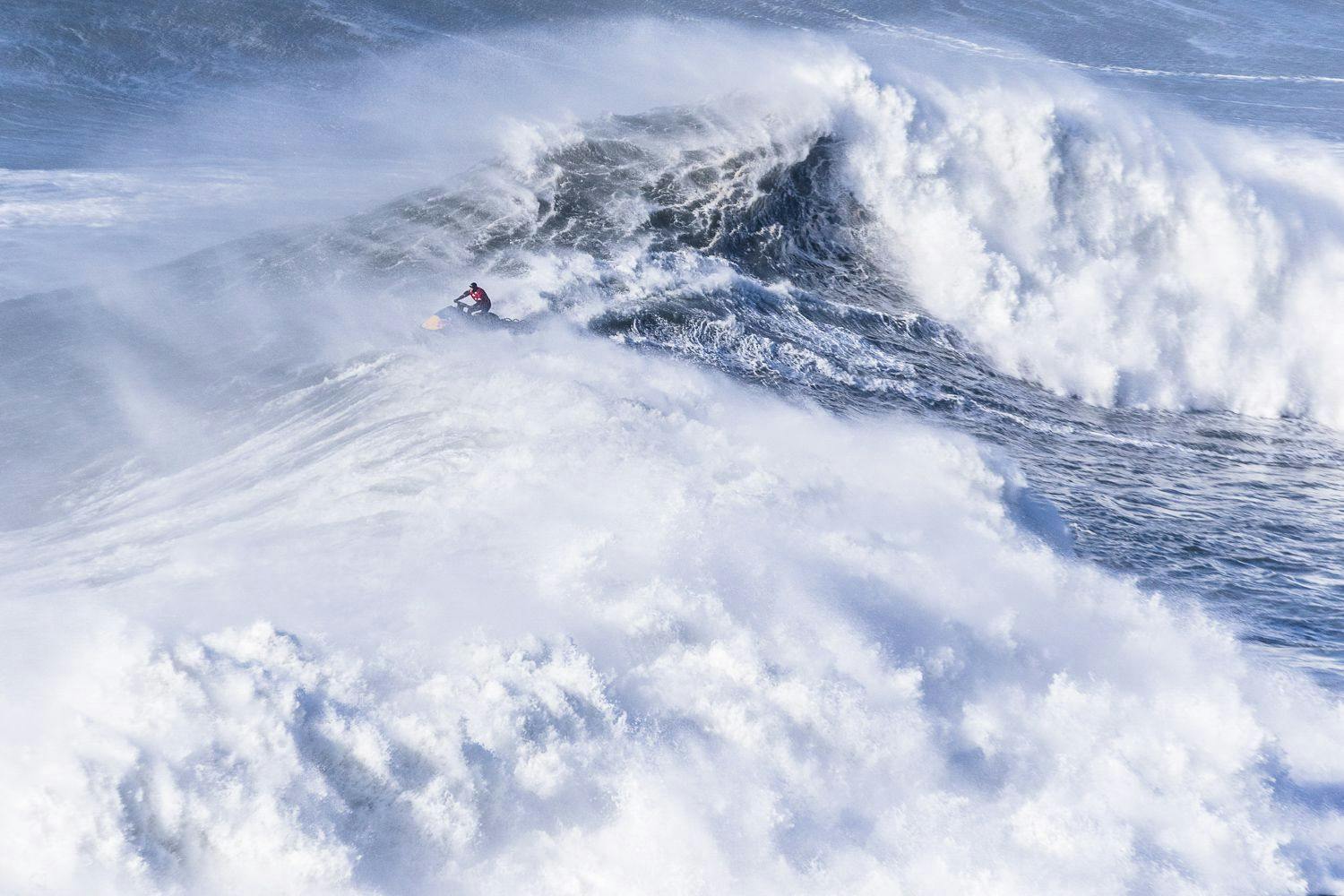
Over the last season, I have been lucky enough to witness firsthand and photograph the wonder of nature that is Nazaré. The thing that struck me most is the patience that goes into these sessions; oftentimes, a surfer waits for over 3 hours in the freezing cold for one single opportunity at a Goliath wave. The waiting game is a fundamental, yet underappreciated, element of big-wave surfing. In the inhospitable waters of Nazaré, one wrong choice can mean broken equipment, an injured body, or worse.
In the mirror image of the surfers, patience is a key element for a photographer hoping to capture Nazaré’s raw power. Personally, once I set up my gear at a strategic point on Praia De Norte, I am ready for hours of waiting for just one second of opportunity. The camera must be outfitted with a large telephoto lens, as the action takes place far from the shore and cliffs where one can set up. My goal is not only to portray the surfer, but the majesty of the wave, so tight framing is not needed, and I prefer as small an aperture as possible, to minimize the risk of a surfer being out of focus. For that one second of immortalized glory, the wait is rewarded. And always remember to keep the camera out until everyone has packed up and gone home, as sometimes the conclusion of a great session tell more powerful a story than the waves themselves.
